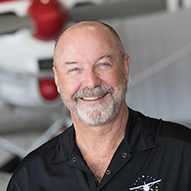Training and Safety Tip: Collision avoidance fundamentals
One of a pilot’s primary responsibilities is collision avoidance: avoiding taxiway signs, drainage ditches, line service personnel, birds, wires and poles, mountainous slabs of granite protruding from the Earth, and other aircraft, to name a few examples.
The topic of collision avoidance is so important that the word “collision” is used 38 times in the FAA’s Private Pilot—Airplane Airman Certification Standards (ACS). It is often listed under the Risk Management heading. Specifically, the FAA informs private pilot test applicants that visual scanning and collision avoidance procedures will be evaluated throughout the entire practical test.
For example, the language used in the ACS in relation to ground reference maneuvers reads, “The applicant demonstrates the ability to identify, assess and mitigate risks, encompassing: …Collision hazards, to include aircraft, terrain, obstacles, and wires.” Keeping a sharp eye out the window is certainly a part of successful collision avoidance in this case. A more complete take on the task involves the pilot’s preflight action to be familiar with the VFR sectional chart and know if there are any towers or obstacles in the area that would make initiating ground reference maneuvers in that area less than wise.
One occasionally overlooked basic collision avoidance procedure is to make clearing turns before initiating maneuvers. The ACS lists areas that typically lead to an unsatisfactory outcome to the practical test, including “Failure to use proper and effective visual scanning techniques to clear the area before and while performing maneuvers.” This means that failing to perform clearing turns before initiating a maneuver is grounds for a “bust”—the vernacular term for the FAA’s preferred language, “unsatisfactory performance.” Either way, the applicant will come away from the practical test without the coveted temporary private pilot certificate.
The long and the short of it: Keep your head up, your eyes outside, and a wide-sweeping visual scan going throughout each flight. It’s the safe thing to do.



